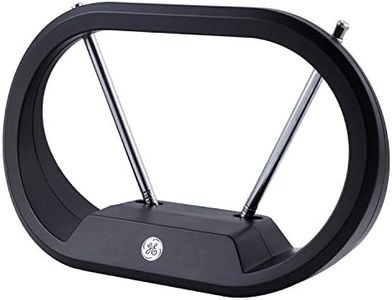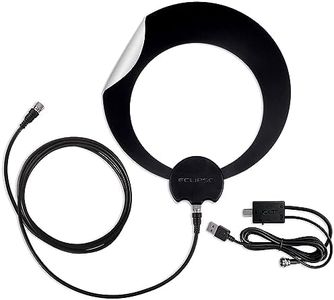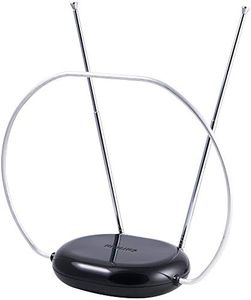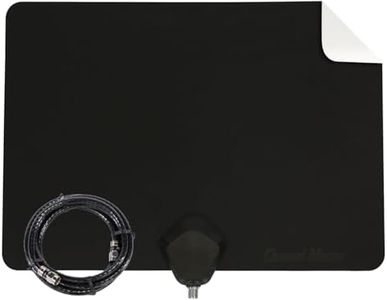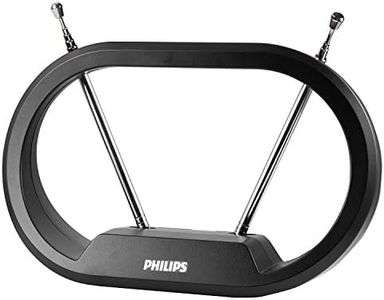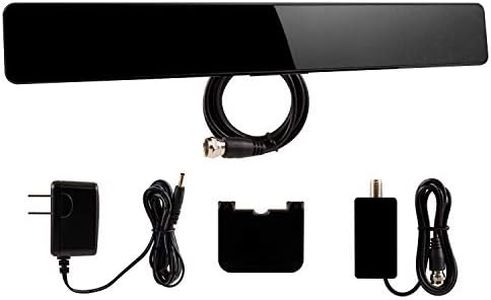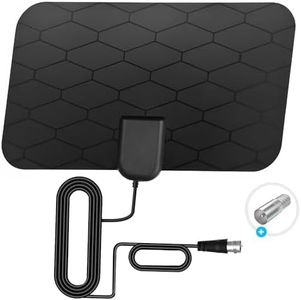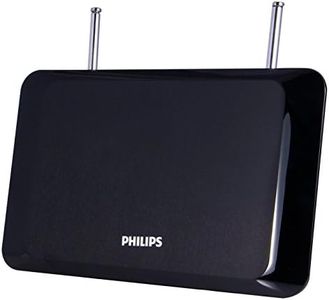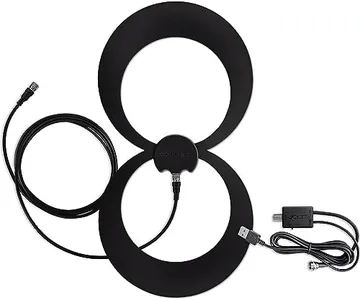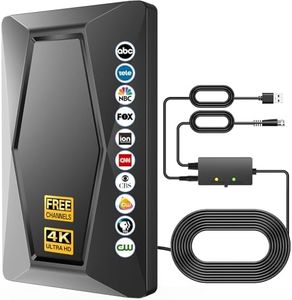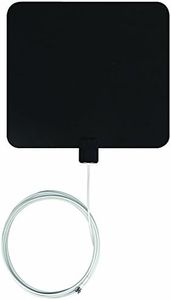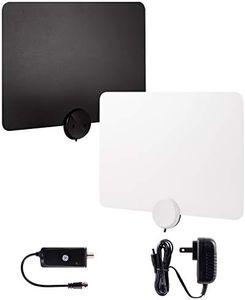We Use CookiesWe use cookies to enhance the security, performance,
functionality and for analytical and promotional activities. By continuing to browse this site you
are agreeing to our privacy policy
10 Best Indoor TV Antennas
From leading brands and best sellers available on the web.Buying Guide for the Best Indoor TV Antennas
Choosing an indoor TV antenna can make a big difference in the number and quality of channels you receive without relying on cable or satellite. The best antenna for you depends on your location, how far you are from broadcasting towers, and your home’s specific setup. Start by checking which channels are available in your area, and consider your living space setup to make sure the antenna you buy can be placed near a window or another optimal position. Remember, there’s no one-size-fits-all solution, but understanding the main specifications will help you make the right choice.Antenna Range (Miles)The antenna range defines how far the antenna can pick up TV signals from broadcasting towers, usually measured in miles. This is important because if you live far from the broadcast towers, you'll need an antenna that can reach those signals. Ranges typically include short-range (under 25 miles), medium-range (25–50 miles), and long-range (over 50 miles). If you live in a city or close to broadcast towers, a short- or medium-range antenna will likely be enough. If you're in a rural area or farther away, you'll want a long-range antenna. Remember, the environment, like thick walls or tall buildings, can affect actual performance.
Antenna Type (Flat, Rabbit Ears, Amped, Clip-on)Indoor antenna types refer to their physical design and installation method. Flat antennas can be mounted on walls or windows and are discreet, while classic 'rabbit ears' are adjustable and sit on top of your TV or table. Some antennas have built-in amplifiers, which boost the signal for better reception. Clip-on antennas are compact and attach directly to your TV. Flat or amplified antennas are best for modern setups where you want to maximize reception and minimize visibility. Rabbit ears or clip-on types might be enough if you have strong signal strength at home. Your living space layout and aesthetic preference will help guide this decision.
Amplified vs Non-AmplifiedAmplified antennas have a built-in electronic booster to strengthen weak signals, which is especially important if you are far from the towers or in areas with obstructions that might interfere with reception. Non-amplified antennas are better for areas with strong local signals and generally have a simpler setup. Choose amplified if you're struggling with weak signal or want access to more channels, especially if your home is surrounded by interference like concrete or metal. For straightforward, nearby urban locations, a non-amplified antenna may be all you need.
Signal Support (UHF/VHF)TV broadcasting happens over two main frequency types: UHF (Ultra High Frequency) and VHF (Very High Frequency). Some antennas only support one, but many modern antennas pick up both. This matters because different channels may be broadcast over different frequencies in your area. Make sure your antenna supports both UHF and VHF to maximize the number of channels you can receive. Checking which channels are available in your region and if they require a certain frequency will help you get the most compatible antenna.
Ease of Installation/Placement OptionsEase of installation describes how simple it is to set up the antenna and whether it offers flexible placement—such as window mounting, wall mounting, or desktop placement. A good setup fits your living space and doesn’t require complex tools or permanent drilling. Flat antennas are usually easiest to hide and mount, whereas some larger or rabbit ear models may require a table or shelf. Think about where you’ll put the antenna and whether it can be easily moved around to find the best signal spot for your situation.
Cable LengthThe length of the cable attached to the antenna determines how far you can put the antenna from your TV, which can be crucial for finding the best signal spot in your room. Short cables (under 6 feet) restrict placement, while longer cables (10 feet or more) offer more flexibility to put your antenna higher up or closer to a window. Assess your living space and decide how much cord you’ll need to comfortably reach the optimal placement area without stretching or using extensions.

